Key takeaways:
- Blockchain enhances transparency and traceability in healthcare, allowing secure and immutable records that improve patient care and research integrity.
- Collaboration among stakeholders can accelerate innovation in surgical research by breaking down data silos through shared blockchain ledgers.
- The technology empowers patients by giving them control over their medical data while ensuring its security and accessibility.
- User education and adaptability are crucial for successful implementation of blockchain solutions in healthcare settings.
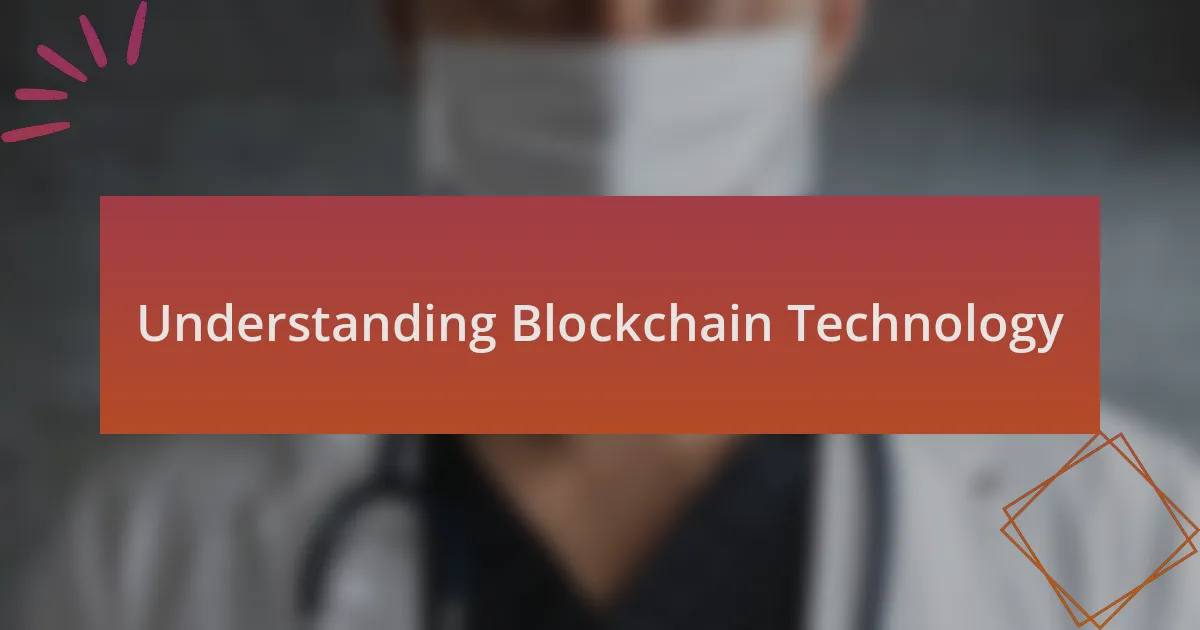
Understanding Blockchain Technology
Blockchain technology is fundamentally a decentralized digital ledger that records transactions across multiple computers. Imagine a vast network where everyone can see and verify every transaction without a central authority dictating the terms. It’s both fascinating and empowering, as it replaces the notion of trust in a single entity with a collective consensus.
When I first stumbled upon blockchain, I was struck by its potential to revolutionize industries beyond finance. Picture a world in healthcare where patient records are immutable, secure, and accessible only to those who need them. That realization sparked my curiosity: if we can harness blockchain for secure medical records, what else might we achieve in surgical research?
One thing that stands out is the transparency blockchain brings to the table. Think about it—every change made is recorded and traceable, making fraud nearly impossible. This characteristic makes me wonder how much more confident we could be in surgical innovations if we could track their development and outcomes on an unalterable chain. It’s a game changer that could lead to new levels of accountability and improvement in patient care.
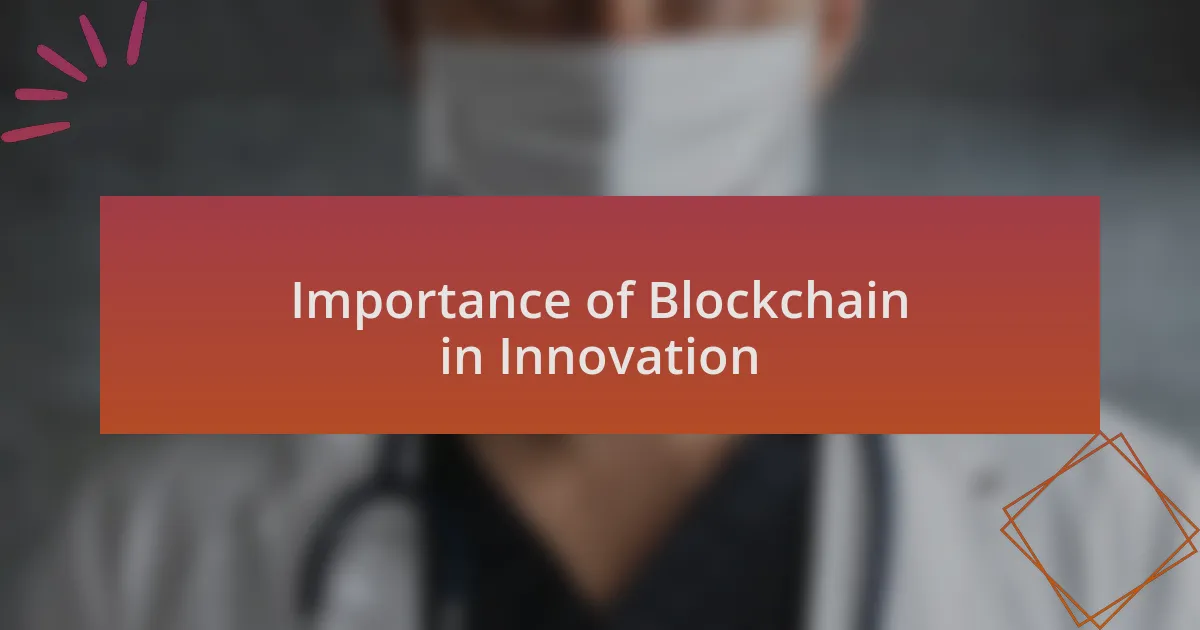
Importance of Blockchain in Innovation
Blockchain is emerging as a catalyst for innovation, particularly because of its ability to enhance transparency and traceability. I recall attending a workshop where experts discussed how blockchain could streamline clinical trials by ensuring that data is not only secure but also immutable. Imagine the reassurance for both researchers and patients if every piece of data in a trial could be verified without tampering. It’s like having an audit trail that builds trust in every surgical advancement.
Moreover, the potential for collaboration in surgical research through blockchain is something I find truly exciting. By allowing multiple stakeholders—hospitals, researchers, and patients—to access and contribute to a shared ledger, we can accelerate the pace of innovation. I often think about how frustrating it can be when vital data is siloed in separate institutions. Wouldn’t it be transformative if we could break those barriers and work together seamlessly to advance surgical techniques and improve patient outcomes?
Another remarkable aspect of blockchain in innovation is its role in protecting intellectual property. I once spoke with a surgeon who had developed a groundbreaking technique but was hesitant to share it due to fears of idea theft. With blockchain, the process for proving ownership and originality becomes so much easier. It’s like having a digital signature that is time-stamped and secure, encouraging inventors to share their breakthroughs freely. Doesn’t that ignite a spark of creativity and collaboration we desperately need in the medical field?
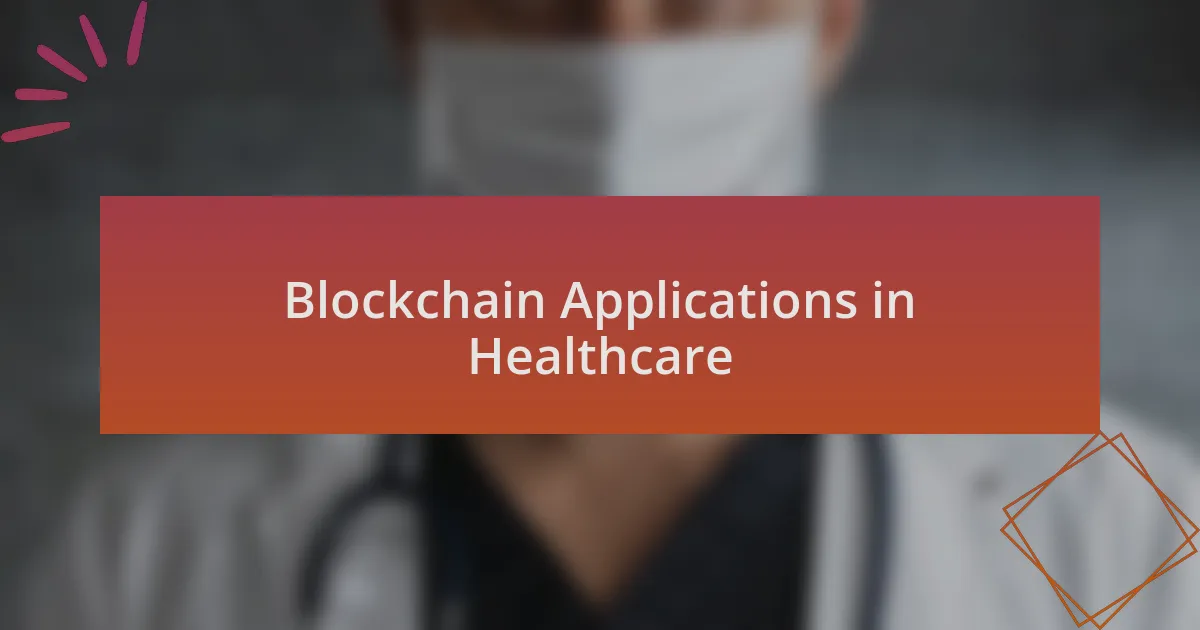
Blockchain Applications in Healthcare
Blockchain has a remarkable capacity to reshape patient data management in healthcare. I recently came across a case where a hospital implemented a blockchain system to store patients’ medical records securely. The feedback was eye-opening; patients felt empowered knowing that they had more control over who accessed their data. Wouldn’t it be comforting for patients to know that their sensitive information is shielded from breaches while remaining effortlessly shareable with authorized healthcare providers when necessary?
In clinical research, blockchain offers unprecedented transparency and real-time access to data for all parties involved. I’ve spoken with researchers who were often wary about data integrity during trials. They discovered that employing a blockchain framework significantly reduced their concerns about data tampering or loss. The thought of having a system that not only tracks data changes but also ensures accountability is incredibly reassuring for anyone involved in surgical research. How much more could we achieve if we all worked off an undeniably trustworthy dataset?
Another practical application of blockchain I find compelling is in managing the supply chain of pharmaceuticals. During a panel discussion, a pharmacist shared his struggles with counterfeit medications entering the market. The integration of blockchain allows for real-time tracking of drug production and distribution, making it nearly impossible for fakes to slip through undetected. This has the potential not only to enhance patient safety but also to restore confidence in pharmaceutical products. Isn’t it fascinating to think about the ripple effects this could have on public health?
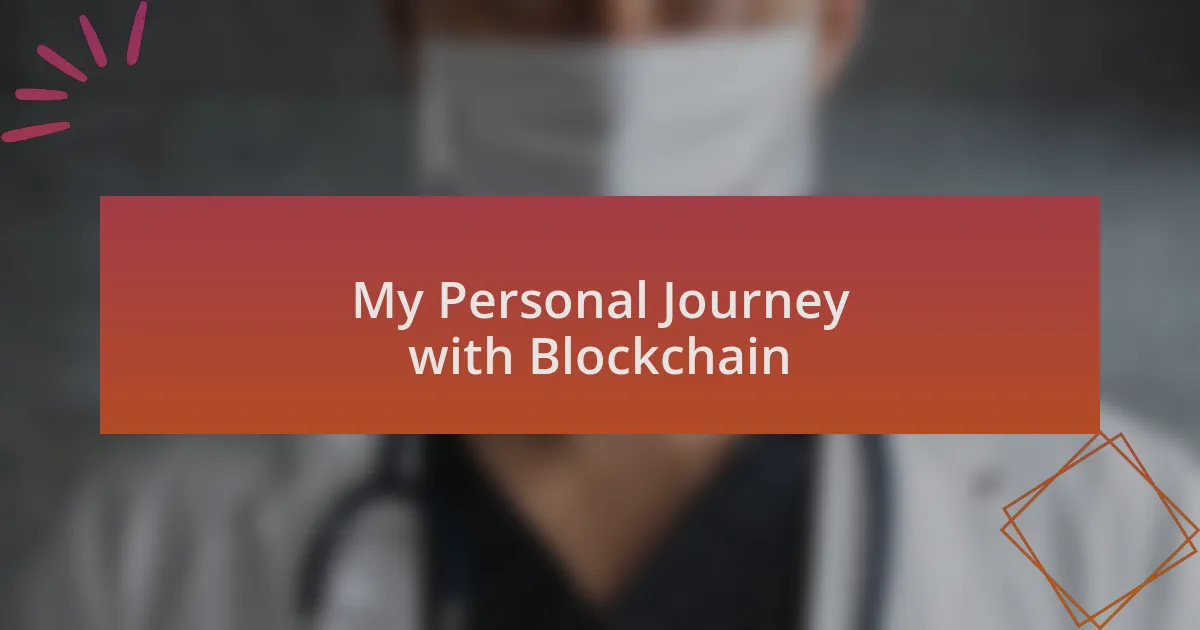
My Personal Journey with Blockchain
My journey with blockchain began out of curiosity. I first explored the technology when a colleague presented a groundbreaking project focused on using blockchain to track surgical instruments in operating rooms. I was immediately drawn to the idea of enhancing patient safety and preventing errors. It struck me how a simple ledger could have such a profound impact on something as critical as surgery.
As I delved deeper into blockchain, I experienced moments of excitement and frustration. While attending a healthcare innovation conference, I listened to a passionate speaker challenge the status quo, emphasizing the need for transparency in clinical trials. His words resonated with me, and I realized that this technology could not only streamline processes but also cultivate trust among researchers, patients, and healthcare providers. Have you ever had that “aha” moment where everything clicks into place? That’s how I felt when I connected the dots between blockchain and clinical integrity.
The moment I truly embraced blockchain’s potential came when I participated in a pilot project within my institution. Collaborating with IT specialists, we designed a prototype system for securely sharing patient consent forms. I still remember the satisfaction I felt when we successfully demonstrated how easily patients could retain control over their personal data. It gave me hope that, with the right innovation, we could empower patients and revolutionize the healthcare landscape. Isn’t it thrilling to think about the future possibilities that lie ahead?
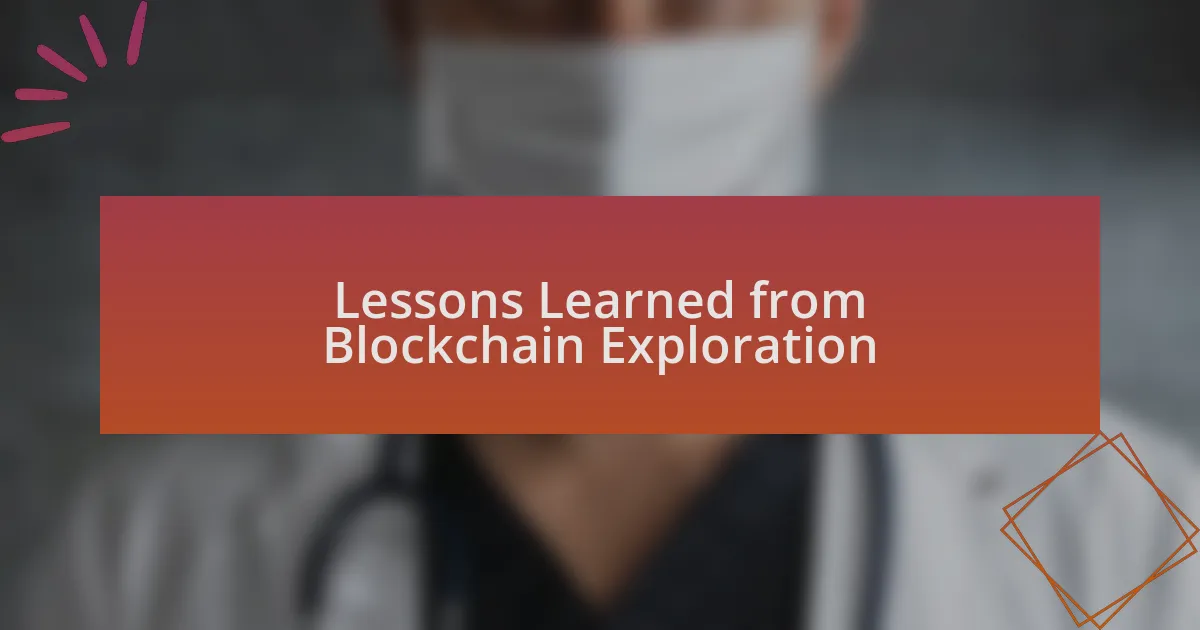
Lessons Learned from Blockchain Exploration
Exploring blockchain technology taught me the importance of flexibility in innovation. During one project, I initially underestimated the learning curve for my team regarding blockchain’s complexities. It became clear that adaptability is crucial; we had to revise our approach after realizing we weren’t fully capitalizing on the technology’s capabilities. Have you ever faced a similar challenge where change transformed your initial plans?
As we navigated these hurdles, I learned that collaboration was key to success. Engaging with diverse teams—like data analysts, surgeons, and administrators—opened my eyes to how varied perspectives can enhance problem-solving. It’s fascinating how a single innovative idea can evolve when different voices come together to refine it. This experience taught me that leveraging collective wisdom can lead to groundbreaking solutions in healthcare.
One of the more profound lessons I gleaned was the significance of user education. Implementing blockchain solutions requires everyone to understand its purpose and functionality. I remember a workshop where we explained our project to hospital staff, and their initial skepticism quickly turned to enthusiasm as they grasped how it could streamline their workflows. How can we expect innovation to thrive without proper education and support? This realization reinforced my belief that fostering a culture of knowledge sharing is vital for successful implementation.